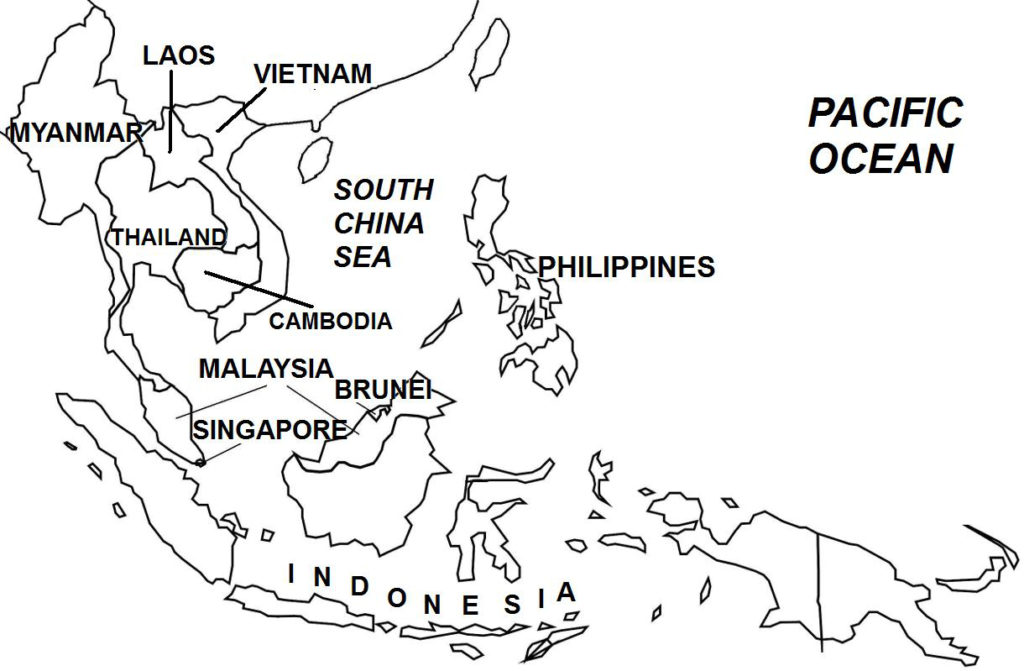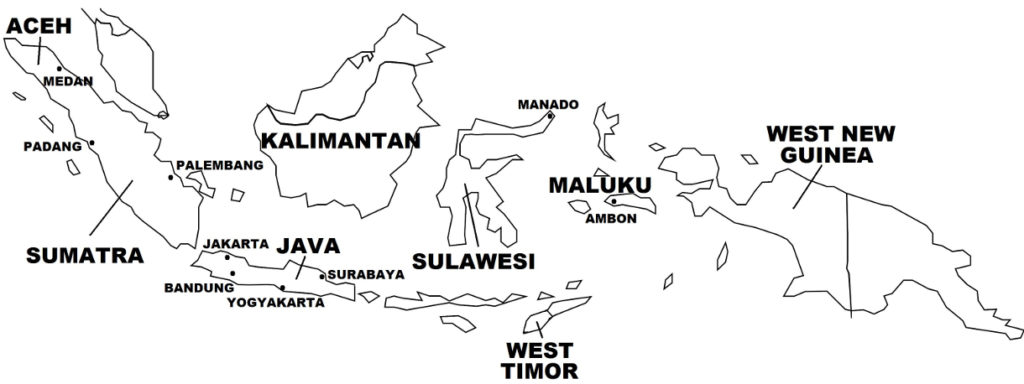On August 15, 1945, World War II came to an abrupt end when Japan announced its acceptance of the Allied terms of surrender. A power vacuum was suddenly created in the Dutch East Indies (present-day Indonesia), leading the nationalists Sukarno and Mohammad Hatta to declare the colony’s independence on August 17, 1945 as the Republic of Indonesia. The PPKI became the interim government, called the Central Indonesian National Committee (KNIP; Indonesian: Komite Nasional Indonesia Pusat) with Sukarno and Hatta named as the country’s first President and Vice-President, respectively, and a national charter which had been drafted earlier was ratified as the country’s constitution.

In the weeks that followed, eight provincial governments across the archipelago were formed, including in Java and Sumatra where support for the Republic was strongest. These actions by the Indonesian Republic to consolidate power were greatly assisted by the aggressive actions of the PETA and Heiho armed militias, which reorganized after having been disbanded by the Japanese Army. Subsequently, these ex-Japanese militias and the Dutch-era indigenous military units of the “Royal Netherlands East Indies Army” would form the core of the Indonesian Armed Forces. A campaign was launched to spread the news of the new Indonesian Republic to the other islands: public speeches were made in major cities, and print and broadcast media spread the word to more distant areas. Sukarno himself addressed crowds involving hundreds of thousands of people in Jakarta. However, apart from Java and Sumatra, the Republic established only limited revolutionary atmosphere in other areas, particularly in the “Great East” regions, including Maluku, Lesser Sunda Islands, and West New Guinea. Also shortly after the independence war had begun, Sukarno was concerned about his war-time collaboration with the Japanese. In November 1945, he reorganized his government into a parliamentary system, naming a non-collaborator, Sutan Sjahrir, as Prime Minister to run the government, while he remained as president in the background, ostensibly with limited authority.

(Taken from Indonesian War of Independence – Wars of the 20th Century – Twenty Wars in Asia)
Sukarno’s proclamation of Indonesia’s independence de facto produced a state of war with the Allied powers, which were determined to gain control of the territory and reinstate the pre-war Dutch government. However, one month would pass before the Allied forces would arrive. Meanwhile, the Japanese East Indies command, awaiting the arrival of the Allies to repatriate Japanese forces back to Japan, was ordered by the Allied high command to stand down and carry out policing duties to maintain law and order in the islands. The Japanese stance toward the Indonesian Republic varied: disinterested Japanese commanders withdrew their units to avoid confrontation with Indonesian forces, while those sympathetic to or supportive of the revolution provided weapons to Indonesians, or allowed areas to be occupied by Indonesians. However, other Japanese commanders complied with the Allied orders and fought the Indonesian revolutionaries, thus becoming involved in the independence war.
In the chaotic period immediately after Indonesia’s independence and continuing for several months, widespread violence and anarchy prevailed (this period is known as “Bersiap”, an Indonesian word meaning “be prepared”), with armed bands called “Pemuda” (Indonesian meaning “youth”) carrying out murders, robberies, abductions, and other criminal acts against groups associated with the Dutch regime, i.e. local nobilities, civilian leaders, Christians such as Menadonese and Ambones, ethnic Chinese, Europeans, and Indo-Europeans. Other armed bands were composed of local communists or Islamists, who carried out attacks for the same reasons. Christian and nobility-aligned militias also were organized, which led to clashes between pro-Dutch and pro-Indonesian armed groups. These so-called “social revolutions” by anti-Dutch militias, which occurred mainly in Java and Sumatra, were motivated by various reasons, including political, economic, religious, social, and ethnic causes. Subsequently when the Indonesian government began to exert greater control, the number of violent incidents fell, and Bersiap soon came to an end. The number of fatalities during the Bersiap period runs into the tens of thousands, including some 3,600 identified and 20,000 missing Indo-Europeans.
The first major clashes of the war occurred in late August 1945, when Indonesian revolutionary forces clashed with Japanese Army units, when the latter tried to regain previously vacated areas. The Japanese would be involved in the early stages of Indonesia’s independence war, but were repatriated to Japan by the end of 1946.
In mid-September 1945, the first Allied forces consisting of Australian units arrived in the eastern regions of Indonesia (where revolutionary activity was minimal), peacefully taking over authority from the commander of the Japanese naval forces there. Allied control also was established in Sulawesi, with the provincial revolutionary government offering no resistance. These areas were then returned to Dutch colonial control.
In late September 1945, British forces also arrived in the islands, the following month taking control of key areas in Sumatra, including Medan, Padang, and Palembang, and in Java. The British also occupied Jakarta (then still known, until 1949, as Batavia), with Sukarno and his government moving the Republic’s capital to Yogyakarta in Central Java. In October 1945, Japanese forces also regained control of Bandung and Semarang for the Allies, which they turned over to the British. In Semarang, the intense fighting claimed the lives of some 500 Japanese and 2,000 Indonesian soldiers.
